#crows zero 2007
Explore tagged Tumblr posts
Text
A/n: This is a requested piece, thank you so much for it and I really hope you enjoy! Also, I apologize that this took so long to get out, I've been busy with a lot of work at the moment.
@starheadsstuff: Hello i am here to propose a request about our boy Izaki Shun in the Crows Zero II. Not much people write about them and i saw you we're taking request so here i am !!
Izaki Shun x Fem!Reader



40 DAYS AND 40 NIGHTS
The rhythmic sound of the train tracks is almost expected, the same noise I'd heard for as long as I can remember. It rocks and squeaks slightly with age, the district not having enough funds to get a newer model. No one really take this train anymore, it's off the main routes and most don't put in the effort to take a scenic ride on the outskirts of the city. But that's what I like, no one's ever there to bother me. Well that was until six months ago.
He'd shown up on a hot summer afternoon, looking confused at the empty train. It'd only been two stops since mine, having just finished school for the day. His gaze was calculated, looking down towards where I sat, then back the other way. I'd looked away when his gaze brushed over me, my mind suddenly finding the window interesting. A seat by the lengthy windows, far from where I'd sat, was where he chose to sit. The entire ride until my stop, he barely made a noise and had his eyes glued to the scenery that passed by, he was like a statue. After that ride, I didn't see him for a few days and I almost forgot about him completely. Until he showed up again. This time when he stepped into the again empty car, he spoke.
"Is this a ghost train or something?" He had asked, a short chuckle leaving his mouth.
"Or something" I responded with a small smile. He'd returned it before taking the same seat he did last time.
It went on like that for months, small conversation that lead into him moving to closer seats. Then it was full conversations and sitting in the same booth as me. Now it's like routine for him to take this train, talk for the thirty minute ride until I get off and repeat the same process the next day. There was no denying he was strategic and nice and... attractive. We'd gotten close over the months and I had to admit, it was pleasant having someone to talk to.
Today wasn't much different from any other and as I sat down on that worn seat I'd sat in for years, I felt myself relax a bit. It was normal for me to feel at ease on this always vacant train, but as of late, as we approach his stop, I grow nervous. Do I look good today? Is my hair a mess? What if my clothes are dirty and I just can't tell?
A flurry of shallow doubt comes on, even when I'm sure he wouldn't notice even if I was in absolute disarray. Would he even care? Does he care? A heat rises to my cheeks at the thought of my unsure feelings being somewhat reciprocated.
The trains breaks screech, signaling the stop is here already. Suddenly I find myself fixing my hair quickly, restraining myself from fiddling any more than I already am. The slight hiss of the door opening and the sound of heavy sneakers is the only sound that draws my attention to the entrance. And there he is, taking calm strikes towards where I'm sat, his usual small smile plastered on his lips.
"Hey, Train Guy, what sensational stories to do have for me today?" My tone is beyond sarcastic, a smile making its way onto my face. He'd told me about many instances that have happened at Suzuran, bloody fights, the hierarchy, his goals. They were all very entertaining.
"I told you already, my name is Izaki. And not much, Genji's doing my head in" His answer is delivered casually as he slips into the seat in front of me, the train beginning to move.
"So the usual then?" I respond with a smirk. His only reaction is a short nod and an equally as wide smirk that mirrors mine. A short silence stretches on between us before he decids to speak.
"How's school?" His question is short, but genuine and he clears his throat afterwards, like it was hard for him to say. I narrow my eyes slightly at him, trying to read him. He'd never really had trouble saying what he wanted.
"It's good, exams are over finally so I'm basically free for the rest of the term" I answer with a tone of relief, enjoying the thought of no more stressful papers to complete.
He again nods shortly, looking out the window at the passing environment, while I watch his side profile. God, he's so handsome. I wonder what he might be thinking right now, where his mind has escaped to. The gentle sway of the train's movement is calming and I try not to stare too much.
"Still no boyfriend?" He asks suddenly, his voice inquisitive. It catches me so off guard I almost choke on my own spit.
"Uh- No, definitely not" My voice shakes slightly with nervousness, who the hell asks that out of the blue?
"Good" The one word answer pushes me further into shock, I keep my eyes on him as he turns his head to face me again. And he looks pleased, an expression I don't see him wear often. "Because I want you to be mine"
It's blunt and leaves my mouth agape, my mind struggles to process his words without malfunctioning. I close my mouth finally, looking down at my lap with heated cheeks.
"You shouldn't joke about that" I say softly, deflecting his obvious confession. I can feel his eyes on me and I keep my gaze away.
"I'm not joking, but I will understand if I'm not who you want" His voice is lowered, like he's trying to calm me.
"I do want you- you just can't be so blunt all the time" I respond, finally looking up at him. There's a wide smile that sits on his face, like this is the happiest moment of his life. I can't help but mirror his expression.
"Being blunt is easier than beating around the bush" He says conclusively, this time keeping his eyes on me and I can't seem to break away from his gaze either.
I give a small nod, it's the only reply I can muster. The rest of that train ride was a sort of bliss, the kind that follows a tense moment. We discuss where we should go for a date and he slips in a few jokes, meant for someone who's more than just his friend. And for once, I'm glad to not be the only one on this train.
#crows zero#crows zero 2007#crows zero 2007 x reader#crows zero x reader#izaki shun#shun izaki#izaki shun x reader#shun izaki x reader#sousuke takaoka#takaoka sousuke#sousuke takaoka x reader#takaoka sousake x reader
25 notes
·
View notes
Text
HSF is really an interesting series. I can't remember school 2013 so it feels like watching a new series.
Every time I watch a series about students fighting between each other it reminds me how crazy I was about Crows Zero in 2007. There is always a bit of Crows Zero in all these types of series/movies.
The dynamic of the relationship between Saint and Shin is fascinating. I would really like to know how they came to drift apart and why Shin is so aggressive towards Saint. I need them to give me more than their happy flashbacks. I got the taste, now give me what happened.
I want to see how they can become friends again. I also wish the series would explain how Shin made his new friends and to see Saint having deeper connection with other students than just Shin.
Also it's not a BL, but damn it's so BL-coded you could be fooled. I think they even put one music that was in Not Me during Saint and Shin's fight with their shinai (also their teacher was really out of his mind to make them practice this while knowing they always fight). This song triggers a pavlovian reflex of expecting something intimate between the characters. 😅
9 notes
·
View notes
Text
Mun Day on Friday

⋆ NAME?: Crowasaurus (Crow for short)
⋆ PRONOUNS?: they/them
⋆ MOST ACTIVE MUSE(S)?: Luka for sure. Beyond him...Baz Barton [ rugini ], Lorcan [ @macdiari ] and Darcy [ @justthecameraguy ]
⋆ RP PET PEEVES?: Insta-shipping without mun consultation, bullying/anon-hate, rp blogs with zero backstory for their muse, and no mun info list.
⋆ EXPERIENCE / HOW MANY YEARS?: I've been writing stories since I was 6, started on tumblr...maybe like...2006 or 2007?
⋆ FLUFF, ANGST, OR SMUT?: All. but the last of those has to be worked up too.
⋆ LONG OR SHORT REPLIES?: long. im a wordie bish. lol
⋆ TIME TO WRITE?: at the moment? i dont even have time to BREATHE most of the time. x_X but after i move....there is HOPE.
Tagged by: no one but i did snag it from @ronmanmob and @brooklynislandgirl
Tagging: ready set GO
3 notes
·
View notes
Link
0 notes
Photo

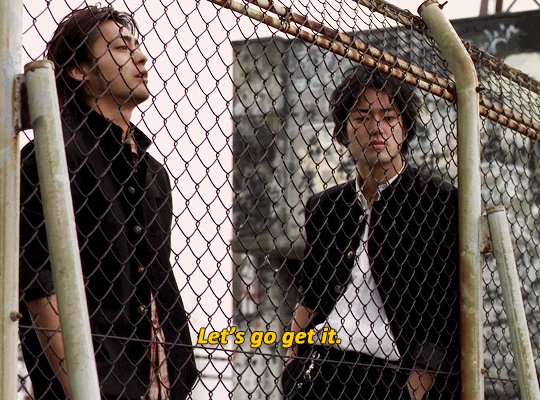
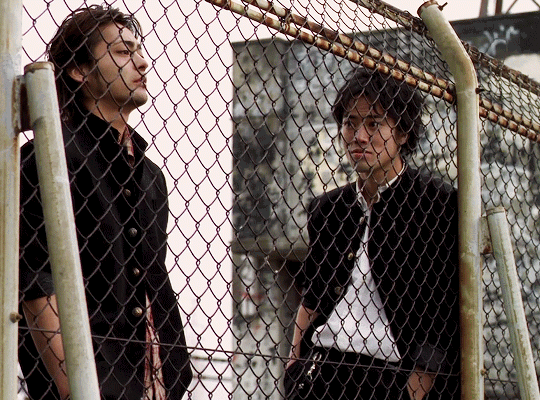
As kids, me and Genji used to look for the best spot to watch the sunset. I figured we’d be friends forever. But that’s all history.
Crows Zero (2007) dir. by Takashi Miike
#filmedit#doyouevenfilm#cinemaspam#filmgifs#moviegifs#worldcinemaedit#dailyworldcinema#crows zero#crows zero 2007#takashi miike#*#tokio and serizawa are boyfriends and you can't change my mind#i mean tokio saying that to serizawa and serizawa remembering and being like#watch the sunset with me instead dumbass
333 notes
·
View notes
Photo
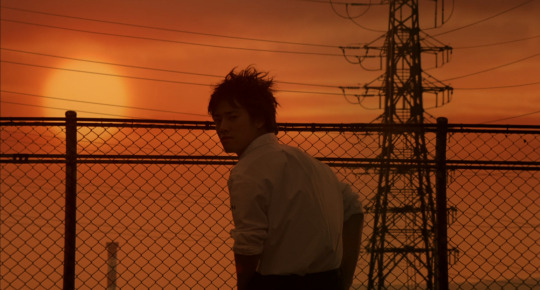
Crows Zero (Takashi Miike, 2007)
#more crows zero because it's the best movie to ever exist#team serizawa#crows zero#takashi miike#2007#movie#movies#japanese movie#Japan#japanese#jap#favorite movie#sunset#orange#roof#student#high school#Tokio Tatsukawa#Kenta Kiritani#crows#Crows: Episode 0#manga#adaptation#screenshot#screencap#screencaps#movie screencaps#movies screencaps
76 notes
·
View notes
Video
youtube
This week I look at the solid 2007 Manga Adaptation Crows Zero.
#Crows Zero#2007#film#japan#japanese#movie#review#cinema#Takashi Miike#Miike Monday#Manga#Shun Oguri#Takayuki Yamada#Drama#action
3 notes
·
View notes
Text
Call for Podficcers!
As happens every year, Purimgifts has far more requests for podfic than podficcers to fill them! Below is a list of all fandoms in which podfic is requested. Numbers in parenthesis indicate number of requests, when greater than 1.
Adventures of the Galaxy Rangers
Archive 81 (Podcast)
Arrested Development
Babylon 5
Birds of Prey (And the Fantabulous Emancipation of One Harley Quinn) (2020)
Carmen Sandiego (Cartoon 2019)
Charmed
Chasing Liberty (2004)
Community (TV)
Dance of the Vampires (Broadway 2002/03) - Steinman/Ives/Kunze
DCU (Comics)
Elementary (TV)
Enchanted Forest Chronicles - Patricia Wrede
Everwood
Fallen London | Echo Bazaar
Farscape
Football RPF
Galavant (TV)
Glee
Goncharov (1973) dir. Martin Scorsese - beelzeebub
Gravity Falls
Hellspark - Janet Kagan
Hockey RPF
House M.D.
Hunger Games Series - All Media Types
Hunger Games Trilogy - Suzanne Collins
Injustice: Gods Among Us
Iron Widow Series - Xiran Jay Zhao
IT (Movies - Muschietti)
Jane Austen's Fight Club
Jessica Jones (TV)
Jewish Hero Corps - Oirich/Randall (Comics)
Jewish Legend & Lore
Jewish Scripture & Legend
Justice League & Justice League Unlimited (Cartoons)
Killing Eve (TV 2018)
Leif & Thorn (Webcomic)
Leverage
(2) Leverage: Redemption
Malevolent (Podcast)
Mediator Series - Meg Cabot
Mighty Morphin Power Rangers
Miraculous Ladybug
October Daye Series - Seanan McGuire
Only Murders in the Building
Orange is the New Black
(2) Original Work
Percy Jackson and the Olympians & Related Fandoms - All Media Types
Post-Biblical Jewish RPF
(2) Power Rangers
Primordial Deep (Podcast)
Rabbinic and Talmudic Judaism RPF,Abrahamic Avatars - Fandom
Robin (Comics)
Sam Jones - Leslie Fish (Song)
Schitt's Creek (TV)
Sense8 (TV)
Shadow and Bone (TV)
Shadow Unit
(2) She-Ra and the Princesses of Power (2018)
Sherlock (TV)
Singin' in the Rain (1952)
Six of Crows Series - Leigh Bardugo
Star Trek RPF
(2) Star Trek: Alternate Original Series (Movies)
(4) Star Trek: Deep Space Nine
Star Trek: Enterprise
(2) Star Trek: Lower Decks (Cartoon)
Star Trek: Picard
(2) Star Trek: The Next Generation
(4) Star Trek: The Original Series
(5) Star Trek: Voyager
Stellar Firma (Podcast)
Stranger Things (TV 2016)
Succession (TV 2018)
Tennis RPF
The Ballad of Songbirds and Snakes - Suzanne Collins
The Chronicles of Chrestomanci - Diana Wynne Jones
The Defenders (Marvel TV)
The Godshead Incidental (Podcast)
The Librarian (Movies)
The Librarians (TV 2014)
The Murderbot Diaries - Martha Wells
The Owl House (Cartoon)
The Penumbra Podcast
The Transformers (IDW Generation One)
Thor (Movies)
Transformers - All Media Types
Transformers (Bay Movies)
Transformers (IDW 2019)
Transformers Animated (2007)
Transformers: Prime
Unseen (Podcast)
Victoriocity (Podcast)
Wednesday (TV 2022)
Welcome to Night Vale
What's Up Doc? (1972)
Wicked - Schwartz/Holzman,League of Legends
Women's Hockey RPF
Yentl (1983)
Young Justice (Cartoon)
Zero Escape (Video Games)
מדרש | Midrash
תלמוד | Talmud
תנ"ך | Tanakh
僕のヒーローアカデミア | Boku no Hero Academia | My Hero Academia,
5 notes
·
View notes
Note
Oooooh feel free to go off about Baba and Daito if you’d like
Yessss! ❤️
Honestly…my brain still can’t quite wrap around the idea of why Daitō was cast in a Yakuza game. His repretoire doesn’t really align with what Yakuza is…it’s a lot of…roles where his beauty is more important than his acting LOL (I’m sure his acting is fineee 😅)
And it’s interesting because the only thing that I could possibly see “linking” him onto the series are these movies he did with a few Yakuza actors (all future ones…kind of Kiritani and Endō would be the only “applicable” links cuz of Y4) called Crows Zero (based off a manga, I guess. still haven’t watched these). The timing also aligns:
Crows Zero - 2007, Crows Zero 2 - 2009, Yakuza 4 - 2010/11, Yakuza 5 - 2012
I’m going to be honest…I’ve really only jumped down the Kimura film/discography rabbit hole, so everything further is assumption based off skimming Wikipedia, etc.
It looks like most actors for the series have some history with acting in roles involving the yakuza or other serious/crime-like media. Daitō is a bit of an odd-one out playing this type of serious role when his prowess isn’t really here.
Like…even Kiritani Kenta had done other crime dramas or movies prior to Y4, and he also played a similarish role to Daitō. Not quite…but close enough for me. EVEN Narimiya Hiroki, who was (aww ☹️ i always get sad when i remember his situation) a king of these “pretty-boy” roles had some crime drama experience before taking on Tanimura.
And that’s really what I have on these two, but I love dissecting the characters and actors if you have any others, lol 😊
I’d love to know the actual reason why they chose him for Baba. Because it really does feel like they intentionally chose a “pretty boy” actor to play this type of role. One where the pretty-little-thing seduces/distracts this epitome of masculinity. It’s not a bad thing that they chose to use this dynamic (if this is actually canon…which just keeps feeling more and more likely) and Daitō…but it is a bit curious lol.
#daitō shunsuke#baba shigeki#yakuza 5#yakuza#yakuza 4 spoilers#…small hint but its there#yakuza 5 spoilers#thank you!!#also…kiritanis wiki page is total yakuza erasure#no reference to him in y4 at all#its so weird
3 notes
·
View notes
Text
Hi Everyone!
I'd like to start this by saying I'm still quite new to this platform and writing for other people's enjoyment, so I apologise for any bad writing or inexperience.
I just wanted to quickly announce that I am taking requests!
You can request anything you'd like, be as specific or as vague as you want. It may take me a little bit to get around to them so your patience is much appreciated.
Here's what I write for:
☆ Crows Zero 1 (2007)
☆ Crows Zero 2 (2009)
☆ Blue Spring (2001)
☆ High and low (all movies)
Though I do only write for a few fandoms at the moment, it may expand in the future.
Feel free to request anything for any character, even if they have barely any screen time!
Thank you!
- Sun 🔆
#high and low x reader#crows zero x reader#blue spring 2001#blue spring#high and low the worst x cross#high and low the worst#crows zero 2007#crows zero 2#high & low#road to high and low
40 notes
·
View notes
Photo

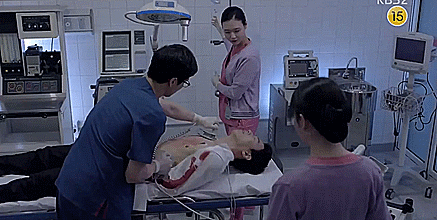

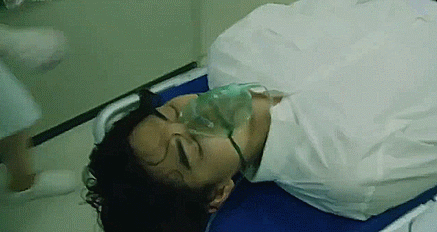
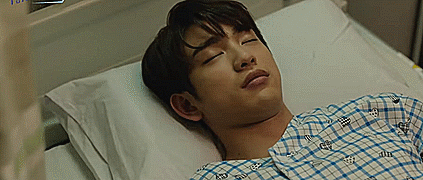




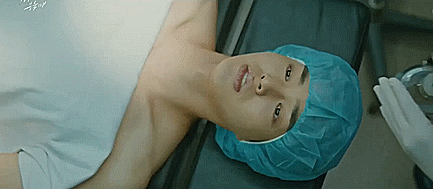
Whumptober Day 10 - Hospital
Awaken - Ep. 6
Black Knight - Ep. 17
Crows Zero I (2007)
Final Life - Ep. 7
He Is Psychometric - Ep. 5
HIStory 3: Trapped - Ep. 11
Imitation - Ep. 7
Miss Granny (2014)
My Beautiful Bride - Ep. 11
When The Devil Calls Your Name - Ep. 10
#whumptober 2021#no.10#hospital#awaken#black knight#crows zero#final life#he is psychometric#history 3: trapped#imitation#miss granny#my beautiful bride#when the devil calls your name#gifs
137 notes
·
View notes
Text
Crows Zero (2007): A Yakuza Is Born
The 2007 film Crows Zero can best be called a tale of how a yakuza is born, or developed at any rate. Sort of a “baby yakuza” story that starts at school. Adapted from Hiroshi Takahashi‘s manga Crows, the screenplay was written by Shôgo Mutô. It is directed by the iconic Takashi Miike. I have read that this is a ‘loose’ adaptation of the manga. This may be true but the film itself is visually…
1 note
·
View note
Photo


Fiction stories: from “once upon a time “to “Sci-Fi”
With the first “once upon a time” said by some teller gathering around a small crowed, entertaining them with his imagination. With every story, tales became an essential part of entertainment. From anecdotal tales passing on through generations, to fictional tales that are purely imaginative.
Stories became a way of entertaining as well as educating. For instance, stories of bravery are told in time of crisis and war, stories of brave soldiers as a way to give people hope. Furthermore, another type of story is told, stories of ordinary daily life, to cope with responsibilities. Folklore tales with humorous style, in which the protagonists is an ordinary person, that might be witty, or foolish and pedantic, in such stories the protagonist often uses tricks, wit or sometimes cunningness to avoid troubles and solve problems. Stories like, Juha, Ali Baba and the Forty Thieves, the adventures of Sindbad, and Aladdin.
Tales of pure imagination made children exited to lose their teeth, so a fairy would put money under their pillows as they sleep. Myths that terrified but also disciplined generations, and taught them not to mess around without their mothers, a myth such as, “Humarat Alqayla”, which literary translates to the donkey of the afternoon, a creature that has some part human and some donkey like that comes on hot afternoons to get disobedient kids, it originated in the Arabic gulf with some origins leading back to Najid, the image of that mythical creature is still present to those who were threatened by it, a story that they deny at times, and dread in another.
Fiction is considered as an attempt to answer pressing existential questions, this conclusion is clear in Mesopotamian myths, in the epic of Gilgamesh for instance, which is an epic poem that revolves around Gilgamesh, the son of an immortal goddess and a mortal human. The most intriguing aspect of this epic is that it is an attempt to understand human nature, as the story unfolds, Gilgamesh tries to understand life and death as a way to accept the inevitability of both as seeks his own immortality.
Using fictional stories to create a myth, a folk tale, has been and still is a way of education, of understanding, a way of self-discipline, as well as a coping mechanism to calm the dread of existence, while also serving the value of cultural legacies. All these myths and tales of dark ghost stores merging in human life, of tooth fairies that treat kids for not crying their lost teeth, is nothing but a glimpse of our curious nature, our imagination that is the gemstone of our intellectual capacity.
With all this huge collection of creative writing and imaginative abilities, we wonder about this genre of literature in our modern time. At the rise of technology there’s a great need for literature that discusses the latest inventions of modern-day science, topics such as, robots, artificial intelligence, space travel, time travel, etc.
Several novels of these topics have been published and critics called them “science fiction literature” which is a genre that caught the interest of readership, film directors, and cinema fans.
Looking at cinema we see examples such as, Theodor, the depressed letter writer in “Her” the story was written by Spike Jonze to represent the loneliness of Theodor’s life, who gets attached to Samantha, the artificial intelligence program with a feminine voice. She listens to him; she understands and knows him. Jones succeeded in depicting this complex and strange love story, as a science fictional prediction.
This mysterious film, although depressing and boring to some, has a serenity to it, a slow burn that overwhelms you with a clear feeling of being focused, as you watch these confused characters find and understand their crisis, their identity, and their limits.
“Theodore represents a futuristic Everyman, the result of human experience enshrouded and infused by technology. What promises to give us connection results in precisely the opposite — the illusion of relationships.” ― Spike Jonze
In 2050, which is a science fiction novel with a plot that revolves around the protagonist, M, an officer that struggles with his purpose in life, he seeks the companionship of a robotic doll, in a time that lacks human connection. M tries to find himself, in an attempt to understand the world he’s living in, as he wanders around overwhelmed with the huge world he lived in.
“The temperature was forty degrees, .. below zero. moderate.. what was called skyscrapers thirty years ago doesn’t compare to these massive buildings, M used to pay attention to them, even when he flew clouds and clouds above, he used to be surprised by one or two of those buildings, he doesn’t have to be cautious now, he knows the sky like the palm of his hands, no one flies on his lane, only him and authorised people, his car now danced between those skyscrapers until he reached a big building, it was a local machine doll company, he looked at the fifty feet glass frontier that projected a changing image of dolls, taking different faces bodies and voices every minute. He looked closer, the doll was talking to him, he deactivated his noise control, stood at the heart of the sky, listening. Hey there captain, you look like an important man.”. 2050
M here, wanders around like Gilgamesh in his epic, looking to calm this troubling need of answers, he feels lost, the same way Theodore is lost, between his letters, his attachment to Samantha with her softly spoken ways.
Are these emotions real? Are they just a matter of programming … while Samantha knows she is programmed with these emotions, M’s doll understands that her awareness of human emotions is not programmed but rather naturally obtained. “Do I exist?.... Like you living, am I a part of the world?”
Through fiction, and fiction only. We are able to reflect on our present, predict our future, with the goal of understanding ourselves, our values and behaviours. Fiction is the soul of literary work, and through fiction, readers reach imaginations beyond their own expectations. Through imagining only, the reader escapes the realms of reality to new horizons and endless possibilities of captivating worlds in which science, technology, myths, and legends are all intertwined.
“Imagination is more important than knowledge. For knowledge is limited to all we now know and understand, while imagination embraces the entire world, and all there ever will be to know and understand.”
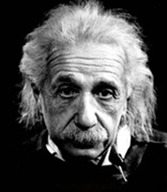
― Albert Einstein
References
Anonymous. (2009). 1001 Arabian nights - The complete adventures of Sindbad, Aladdin and Ali Baba - Special edition. Special Edition Books.
Watts, Linda S. (2007). Encyclopedia of American folklore. NY, NY, United States of America: Facts on file Inc. page 386. ISBN 0-8160-5699-4.
Mesopotamia. (2018, March 14). Retrieved from https://www.ancient.eu/Mesopotamia/
The epic of Gilgamesh. (1973). Penguin UK.
Jonze, S. (Director). (2013). Her [Motion picture].
Einstein, A., & Shaw, G. B. (1931). Einstein on cosmic religion and other opinions and aphorisms.
Mohammad Al-Ahmadi. (2020). 2050.
2 notes
·
View notes
Text
The School-to-Prison Pipeline in Philadelphia
**Long Post Ahead!**
“The nature of the criminal justice system has changed. It is no longer primarily concerned with the prevention and punishment of crime, but rather with the management and control of the dispossessed.” ― Michelle Alexander, The New Jim Crow: Mass Incarceration in the Age of Colorblindness (2012).
What is the School-to-Prison Pipeline?
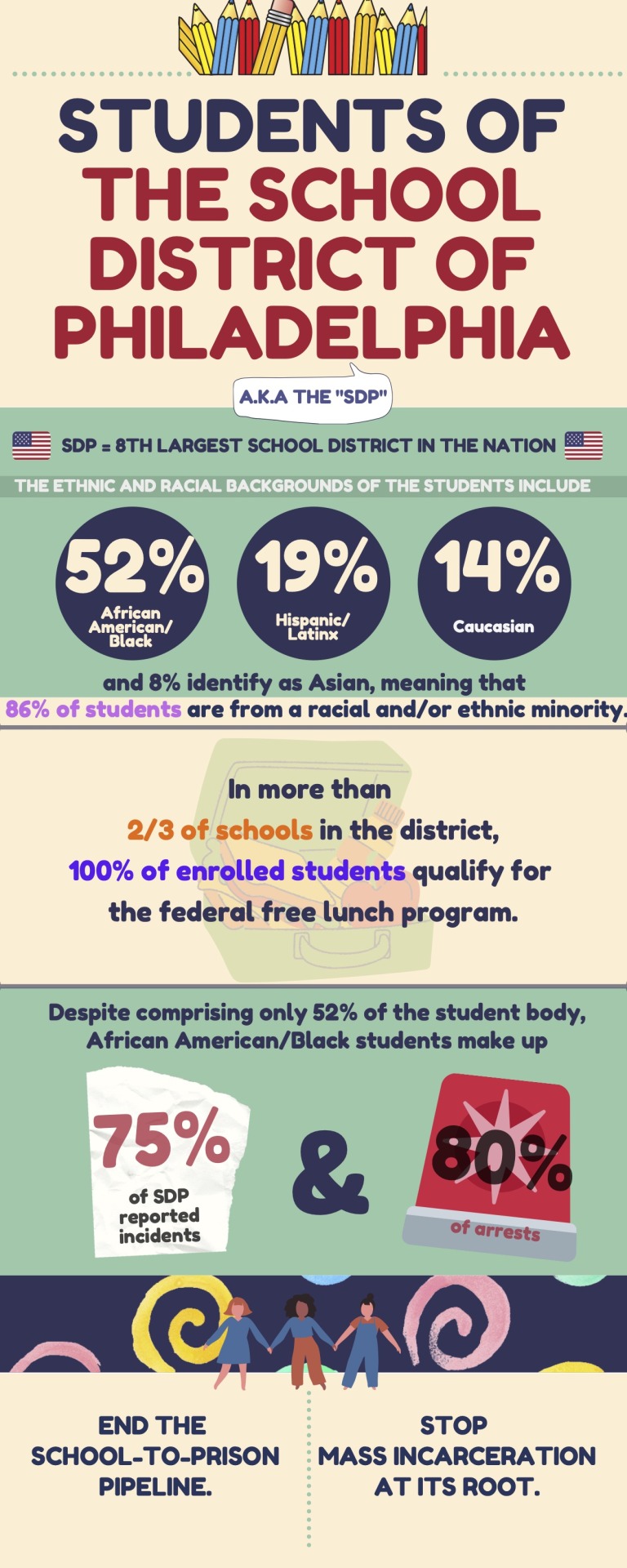
If you’ve been paying attention to the news these past nine months, you’ll recognize a familiar racial justice buzzword appearing in the title of the article. The school-to-prison pipeline, like police brutality and the war on drugs, is a part of a larger system of oppression aimed at minority individuals. In this case, minority children in schools. Minority students are more likely to face disciplinary measures in their schools, namely suspensions and expulsions, which have a drastic impact on their lives outside of the classroom. This includes students being more at risk of entering the criminal justice system. It is believed that this system is purposeful— a cog in the machine of mass incarceration that spins around us daily. Gass and Laughter (2015) sum up the school-to-prison pipeline explicitly: “in short, ‘priorities to incarcerate compete against priorities to educate.’”
The school-to-prison pipeline is an umbrella term referring to the different policies that have been enacted by federal and state governments in schools to curb misbehavior since the late 1980s. Such policies have included zero-tolerance, metal detectors, school police/security officers, surveillance, and in general, harsher school discipline measures (Goldstein, Cole, Houck, Haney-Caron, Holliday, Kreimer, & Bethel, 2019). It was believed by the SDP that, as Jonathan Kozol claims in Savage Inequalities (2016), “the problems of the streets in urban areas... frequently spill over into public schools. These policies unintentionally affect students of color more so than white students. And, although students living in poverty are always in a place to face more severe consequences for similar actions, being from an affluent neighborhood does not necessarily exempt one from the school-to-prison pipeline. “A recent report by the Government Accountability Office, which relied on a previous set of federal civil rights data, found that racial disparities in school discipline “were widespread and persisted regardless of the type of disciplinary action, level of school poverty, or type of public school attended” (Blad & Mitchell, 2018).
According to a research study on suspension trends in the School District of Philadelphia, there is evidence that “[finds] relationships between suspending students and negative student outcomes, including low academic achievement, grade retention, dropping out, decreased levels of civic engagement, legal troubles, and emotional and psychological disorders” (Park, Karakus, and Lesnick, 2019). Indeed, author of Restorative justice in urban schools: disrupting the school-to-prison pipeline (2016) Anita Wadhwa agrees: “just as people who are not valued in the service economy have been socially excluded and contained in prisons, young people who are unable to perform on grade level or adhere to behavioral norms are often excluded through suspension and expulsion and contained in alternative schools or juvenile detention centers” . From the same study, we learn that black and African American students are twice as likely to be suspended than white students, and Hispanic/Latinx students are 3.38 times more likely to be suspended in fifth grade than white students (Park, et. al). This data is consistent with statistics that have been discovered across the country that points to disproportionate suspensions between racial/ethnic groups. “Moreover, school attendance protects against misconduct, and thus, suspending or expelling students may actually increase future student misconduct,” reports the Children and Youth Services Review. “When out of school, many suspended and expelled students are unsupervised during the day while parents are at work, increasing opportunities for further delinquent behavior” (Goldstein et al., 2019).
Both in-school and out-of-school incidents can result in legal action against students, including arrests, imprisonment, and court cases. “As a result, schools became the primary source of youth referrals to the justice system... transforming exclusionary school discipline policies into a school-to-prison pipeline” (Goldstein et al., 2019). This legal action can have a psychological and physical impact on students, not only marking them with a criminal record from a young age, but also increasing their chances of offending again. The school-to-prison pipeline ingrains ideas of mass incarceration into students from the time they begin pre-school throughout their academic lives and well into their futures.
History of School Discipline Measures in Philadelphia
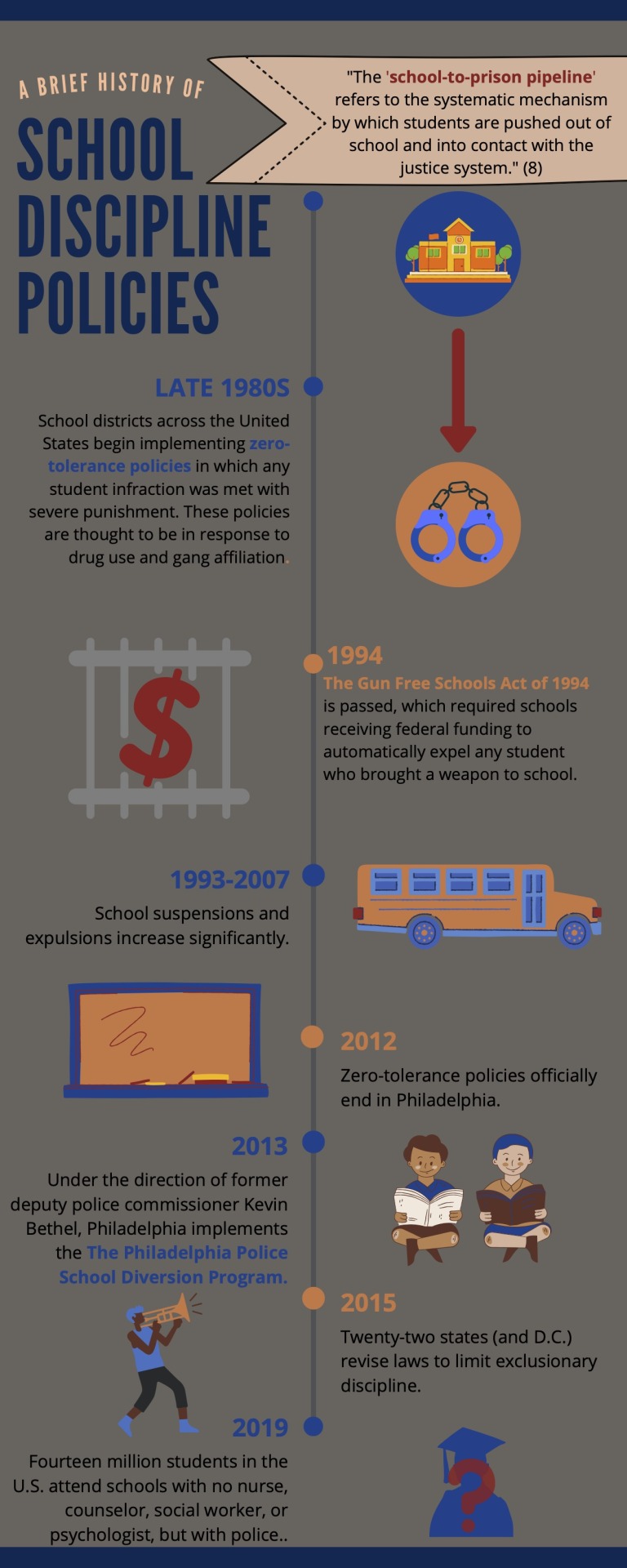
Following the lead of other major U.S. cities in the early 1990s, the School District of Philadelphia implemented zero-tolerance behavioral policies to try to curb student violence and drug abuse. Those policies continued the long tradition of alienating people by socioeconomic status, ability, and especially, race through the ensuing decades. From 1993-2007, this included a sharp increase in the number of students suspended from school. “For example, although 21.6% of all students in grades 6 through 12 were suspended in 2007, nearly half (49.5%) of black male students in those grades were suspended and 16.6% of black male students in those grades were expelled” (Ritter, 2018).
Later in 2013, police analysts discovered that the SDP was the largest contributor to youth arrest referrals in the city, and a year later, it was concluded that “[Black and] African American students were involved in 75.0% of reported incidents in the SDP and accounted for 80.0% of arrests, despite constituting only 51.8% of the district's student body” (Goldstein, et. al). However, this was also the time that began to see improvements in the school policing system.
After reading the police analysis in 2013, former deputy police commissioner Kevin Bethel designed a diversion program to create barriers to arresting students. His plan saw a 84.3% reduction in student arrests in its first six years of implementation (Mezzacappa, 2020). Still, as of 2019, “14 million students attend schools with police but no counselor, nurse, psychologist, or social worker” (Mezzacappa, 2020).
The Diversion Program in Philadelphia
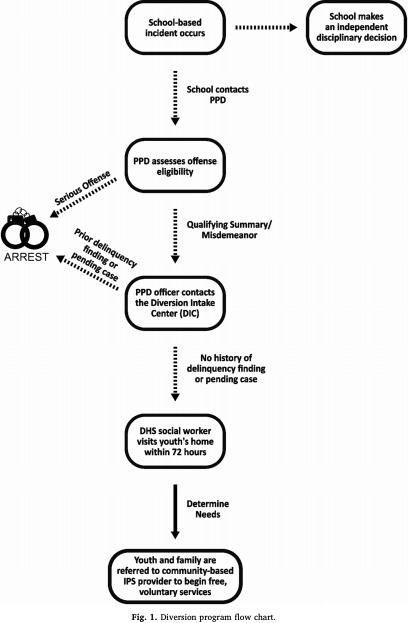
(Goldstein et al., 2019)
As mentioned above, Philadelphia’s Diversion Program is one of the city’s newest measures to minimize minority youth incarceration. Headed by Kevin Bethel, the program’s primary purpose is to prevent the involvement of the Philadelphia Police Department (PPD) in schools as much as is deemed safe by the program. The Diversion Intake Center (DIC) acts as a final check of qualification before an officer is dispatched to a school; if the student meets certain criteria (for example, being under the age of ten), then the PPD concludes its involvement and a social worker is sent to work with the student’s family within 72 hours (Goldstein et al., 2019).
PPD school officers, SDP school safety officers, and some school administrators received 8 training hours for the program, and the PPD officers obtained an additional 2.5 hours of training in adolescent decision making and positive behavior reinforcement (Goldstein et al., 2019). When an incident occurs that requires PPD school officers, the school first contacts their office. If the offence is minor enough, then the call is then transferred to the DIC. Only when this office determines that the student has no history of arrest is the student placed with a social worker.
The program has shown success in its recent years, but the issue of youth incarceration has not diminished entirely; “still, the promises that once beckoned— the promises of technology, material comfort, democracy, human rights, fairness, basic respect, and decency— have not been fulfilled in much of the world” (Isbister, 2019). Already, plans to expand the Diversion Program include branching out to the surrounding community. Training and resources for teachers are also items that the community has deemed high priority (Blad & Klein, 2018). One could add that the students could benefit from more education, as Peggy McIntosh said “My schooling gave me no training in seeing myself as an oppressor, as an unfairly advantaged person, or as a participant in a damaged culture” (McIntosh, 2019). Another researched solution could also include restorative justice, which the U.N. defines as “a problem solving approach to crime that focuses on restoration or repairing the harm done by the crime and criminal to the extent possible, and involves the victim(s), offender(s) and the community in an active relationship with statutory agencies in developing a resolution” (Mccluskey et. al, 2018). Any step listed above would be one in the right direction, but a combination of the above would like combat the issue the strongest. “The lesson for those committed to fighting inequality… is to fashion a new agenda that gives more scrutiny to both racial and nonracial political and economic forces” (Wilson, 2008).
Works Cited
Alexander, M. (2012). The new Jim Crow: mass incarceration in the age of colorblindness. Revised edition. New York: New Press.
Blad, E., & Klein, A. (2018, April 11). Betsy DeVos Weighing Action on School Discipline Policy; GAO: Black students disciplined more. Education Week, 37(26), 18.
Blad, E., & Mitchell, C. (2018, May 2). Black Students Bear Uneven Brunt of Discipline, Data Show; Disparity in school arrest rates rose. Education Week, 37(29), 10.
Gass, K. M., & Laughter, J. C. (2015). "Can I make any difference?" gang affiliation, the school-to-prison pipeline, and implications for teachers. The Journal of Negro Education, 84(3), 333-347.
Goldstein, N. E., Cole, L. M., Houck, M., Haney-Caron, E., Holliday, S. B., Kreimer, R., & Bethel, K. (2019). Dismantling the school-to-prison pipeline: The Philadelphia police school diversion program. Children and Youth Services Review, 101, 61-69. doi:10.1016/j.childyouth.2019.03.022
Isbister, J. (2014). Promises not kept: Poverty and the betrayal of Third World development. Bloomfield, CT: Kumarian Press.
Kozol, J. (2012). Savage inequalities: Children in America's schools. New York, NY: Broadway Paperbacks.
Mccluskey, G., Lloyd, G., Stead, J., Kane, J., Riddell, S., & Weedon, E. (2008). ‘I was dead restorative today’: From restorative justice to restorative approaches in school. Cambridge Journal of Education, 38(2), 199-216. doi:10.1080/03057640802063262
McIntosh, P. (2019). White Privilege: Unpacking the Invisible Knapsack (1989) 1. On Privilege, Fraudulence, and Teaching As Learning, 29-34. doi:10.4324/9781351133791-4
Mezzacappa, D. (2020, June 12). Movement for police-free schools reaches Philadelphia.
Park, J., Karakus, M., & Lesnick, J. (2019, March). Suspension Trends in the School District of Philadelphia, 2015-16 to 2017-18.
Ritter, G. W. (2018). Reviewing the Progress of School Discipline Reform. Peabody Journal of Education, 93(2), 133-138. doi:10.1080/0161956x.2018.1435034
Wadhwa, A. (2015). Restorative justice in urban schools : Disrupting the school-to-prison pipeline. ProQuest Ebook Central https://ebookcentral.proquest.com
#philadelphia#activism#mass incarceration#school to prison pipeline#racial justice#school discipline
4 notes
·
View notes
Photo
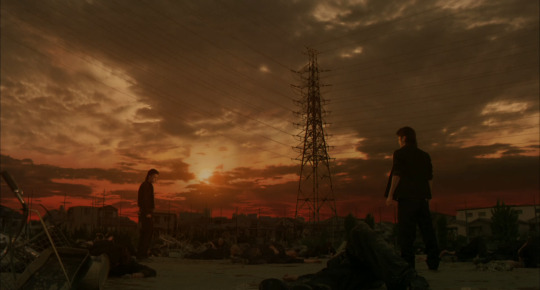
Crows Zero (Takashi Miike, 2007)
#crows#crows zero#takashi miike#Shun Oguri#Takayuki Yamada#2007#movies#movie#screenshot#screencap#screencaps#movie screencaps#movies screencaps#sunset#cinematography#cinema#sky#jap#japan#japanese#japanese movie
46 notes
·
View notes
Text
TAKASHI MIIKE: ANATOMÍA DE JAPÓN
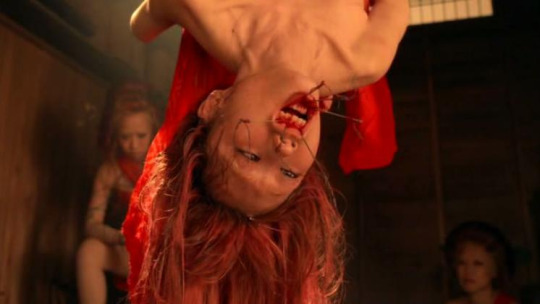
Por Alexander Dugin
Traducción de Juan Gabriel Caro Rivera
Engañosas metamorfosis del Arquetipo de la Gran Madre de Mishima
El arquetipo de Mishima en la cultura japonesa de la posguerra fue el ejemplo más alto de la sutil dialéctica, en la que se hizo sentir la combinación peculiar del liberalismo modernista que ha introducido una serie de aspectos matriarcales en el sintoísmo. Así se construyó una nueva cultura japonesa, en la que todo lo japonés propiamente dicho, relacionado con la auténtica identidad japonesa, estaba prohibido, pervertido o sustituido. Esta cultura, que dio nombres brillantes en la literatura, el cine, la música, etc., se basó en la rápida degradación del espíritu tradicional japonés, en la desintegración profundamente arraigada del Logos celestial, disipándose entrópicamente en partículas infinitamente pequeñas. Era una cultura en decadencia, que fascinaba en gran medida a Occidente con su exotismo, rapidez y originalidad. Los intelectuales japoneses de la posguerra, que decidieron "esperaremos un poco más...", haciendo todo esto algo cada vez más dolorosa y perverso.
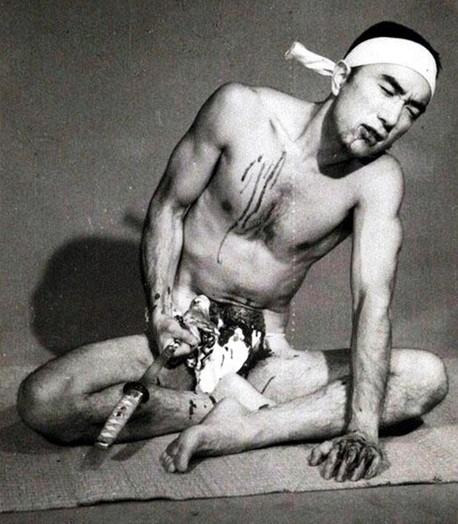
En este sentido, el célebre director de cine japonés Takashi Miike puede considerarse un vivo ejemplo de la cultura japonesa moderna, reflejando la estructura de su estado actual, alguien quien ha rodado muchas películas de diversos méritos, pero en muchas de ellas ha logrado reflejar las principales líneas de fuerza que atraviesan el Japón moderno. Un cauteloso europeísmo con su sesgo en la etnología y la ecología de Akira Kurasawa, e incluso la trágica paradoja de Takeshi Kitano, en Miike es superado por las formas más extremas de expresión del absurdo, la crueldad y la degeneración. La sociedad japonesa de Miike no es solo una sociedad extremadamente degenerada, es una sociedad que prácticamente no existe, que se ha convertido en su propio simulacro, una ilustración del posmodernismo japonés. Occidente penetró en el núcleo mismo de la cultura japonesa, destruyó todos sus lazos orgánicos, cortó todas las cadenas semánticas y los "residuos de lo japonés" afloraron a la superficie, en forma de sadismo, crueldad, colapso familiar, degeneración, mafia, perversión, corrupción, patología y al mismo tiempo etnocentrismo, de todo esto están llenas las peliculas de Miike.
Mad yakuza
Cada película de Miike refleja un lado u otro del morbo de la sociedad japonesa. Toda una serie de películas sobre los yakuza que son una representación grotesca de pseudo-samuráis, militantes, grupos extremadamente masculinos, que se distinguen por una crueldad excesiva, una indiferencia moral absoluta y, al mismo tiempo, profundamente comprometidos con la descomposición del sistema social de Japón, donde la corrupción, el inmoralismo y la falta de sentido se han convertido en una norma universalmente reconocida.
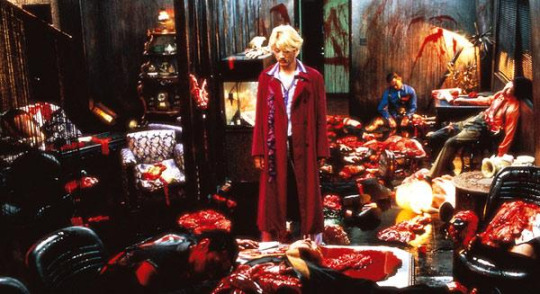
Miike describe a sus héroes la mayoría de las veces en un contexto surrealista, donde el absurdo alcanza su clímax, los yakuza, los policías, la gente común y los héroes al azar se mezclan más allá de cualquier reconocimiento en un tejido continuo irreconocible de desmembramiento sangriento, todo tipo de perversiones, crueldad injustificada, completamente desprovisto de motivación, en el contexto del cual la “decisión del samurai” y la “ética militar” se convierten en una parodia completamente sin sentido.
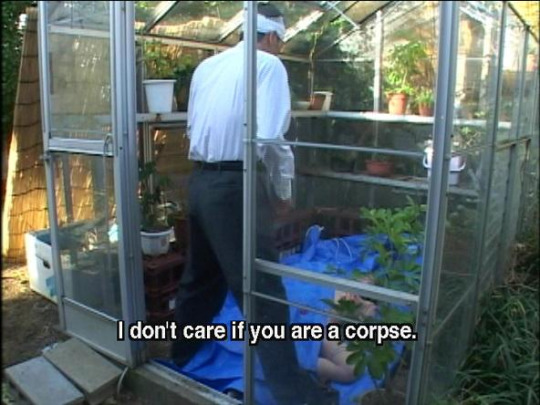
Un ejemplo sorprendente de cómo el género popular de películas japonesas de Miike sobre los yakuza (en una versión mucho más moderada, representada por una serie de obras de otro famoso director japonés, Takashi Kitano) se convierte en un delirio surrealista, puede servir como la película "Yakuza Horror Theatre: Gozu" (2003) y la serie la película "Policía que sufre de una escisión de personalidad esquizofrénica" (2000), donde los temas clásicos de Miike se convierten en una mezcla de patología del delirio y hallazgos postmodernos absurdos.
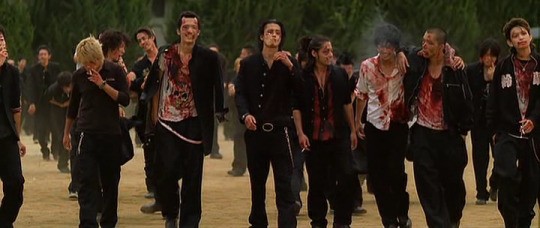
La crueldad dolorosa y sangrienta en sí misma, aparte de cualquier trama inteligible capaz de racionalizar al menos parcialmente todo esto, se convierte en un contenido independiente de películas como “Ichi the Killer” (2001) o “Izo” (2004). En la película “Ichi the Killer”, el joven con retraso mental Ichi, que no tiene emoción alguna, a lo largo de la película mata sin sentido, por orden y por accidente, a todos los que se le acercan con la ayuda de patines afilados. Y la película "Izo" ofrece una versión surrealista del personaje histórico real, el samurái Izo Okada (1832-1865), que se convierte en un espíritu inmortal de destrucción según Miike, que renace una y otra vez con un objetivo: el exterminio total de todos los que se interponen en su camino. Al mismo tiempo, la posición del propio Miike en la interpretación de los personajes retratados y sus acciones permanece estrictamente neutral: describe todo lo que sucede con minuciosidad y precisión documental, sin importarle en absoluto cómo lo evaluará el público. Como regla general, los espectadores estiman esto de manera bastante adecuada:
En el posmodernismo, el significado está abolido, y la única forma de interpretación sigue siendo el hecho mismo de la contemplación y la devoción siguiendo cada giro de la trama en última instancia sin sentido para tirar de mi cabeza lo que vi en el mismo momento de salir del cine o los créditos finales de la transmisión televisiva.
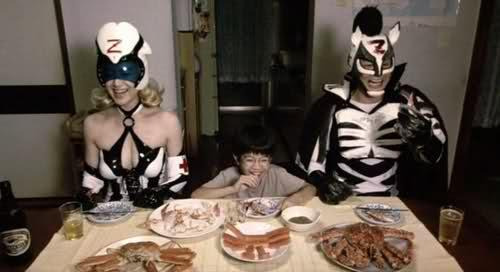
Zebraman: un vuelo a ninguna parte
Con la misma neutralidad y puntualidad distante, Miike interpreta otros temas: en particular, la completa desintegración de la familia japonesa y la desaparición de los estados y relaciones sociales clásicos en ella (películas "Visitante Q" [2001] o "Felicidad de la familia Katakuri" [2001]); la criminalización radical de las escuelas japonesas y la autonomización del arquetipo adolescente, privado de los procedimientos para crecer en las condiciones de la individualismo liberal (“Crow Zero” [2007] y “Crow Zero-2” [2009]); convirtiendo a Japón en un vertedero industrial y a los japoneses en sus habitantes (Shangrila [2002]), etc.
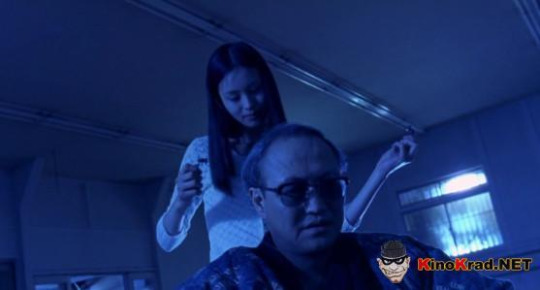
Especialmente es necesario enfatizar la apelación de Miike a las tramas mitológicas y arquetípicas, a veces presentadas de una manera deliberadamente infantil con la ayuda de una estrategia posmoderna reflejada. Entonces, en la serie de películas "Muerto o Vivo" estamos hablando de las reencarnaciones de dos ángeles castigadores que destruyen el capitalismo corrupto.
Las películas “Zebraman” (2004) y “Zebraman 2” (2010) representan el mito del Kirin, la versión japonesa de Qilin, el unicornio amarillo, el símbolo del Logos chino, que está encarnado en la grotesca figura de unos patéticos maestros de escuela que creían en los cómics y trataban de volar por el cielo como los superhumanos y los héroes que salvan a la humanidad.
La Gran Madre
La muy sutil película "Kinoproba" (1999), que se convirtió en una de las películas más famosas de Miike, está dedicada al elemento oscuro de lo femenino, donde bajo la máscara de una niña frágil se esconde una esencia sádica sedienta de sangre que busca el engaño, el asesinato, la tortura, el desmembramiento y la muerte a todo lo que se le presente.
Estas engañosas metamorfosis de la Gran Madre, presentadas vívidamente en la "Prueba de la pantalla", reflejan el diagnóstico más preciso del estado moderno de la civilización japonesa: bajo la pulcra e inocente limpieza y precisión tecnológica que presenta el tipo de adolescente japonesa, hay un abismo de decadencia, vicio, degeneración y destrucción, desde que la contemplación de la conciencia colectiva de la sociedad japonesa busca escapar por todos los medios posibles, pero que solo lo alcanza por medio del arte y los instintos psicológicos, hasta cubrirlas con una ola de horror total. En "Kinoproba" puedes leer la versión posmoderna contemporánea de la historia de la visita de Izanagi al país de Yomi y su fatal encuentro con Izanami en el infierno.
El chino volador
La actitud del propio Takashi Miike hacia el mundo que representa es bastante difícil de entender, ya que ha realizado muchas películas, a veces bastante diversas y con diferentes actitudes ideológicas, unidas únicamente por el indudable posmodernismo estilístico del director. Pero la clave de su posición se puede encontrar en la película El pueblo de las aves chino (1998) (Tugoku no tojin - 中国 の 鳥 人), en la que, más franco que en otras películas, revela una ideología personal cuidadosamente oculta. En esta película, dos mundos, Japón y China, se oponen de manera bastante transparente, pero no como fenómenos sociales, sino como dos espacios simbólicos. Japón está representado por el ingenuo e indefenso empleado Wada y un yakuza de mediana edad enviados en busca de tesoros a las abandonadas montañas de China. Ambos se muestran como representantes de una civilización completamente decadente, sin valores morales o religiosos, sin cosmovisión, sin identidad propia positiva, actuando en virtud del individualismo y la inercia dictada por la influencia de las circunstancias materiales. Este es el típico japonés de Miike, una especie de anti-Japón, su doble negro ocupada y moderno de la posguerra.
Una vez en China, los héroes no llegan a una sociedad socialista, sino que se encuentran en un entorno natural habitado por una etnia que no se ve absoluto afectada por la Modernidad y que vive en condiciones de valores simples, claros y transparentes, mitos, leyendas celestiales y en la sinceridad. El núcleo principal de los mitos de estos habitantes de un pequeño pueblo perdido, donde los japoneses con gran dificultad se suben a las tortugas de agua, se encuentra en la leyenda de los "pueblos voladores".
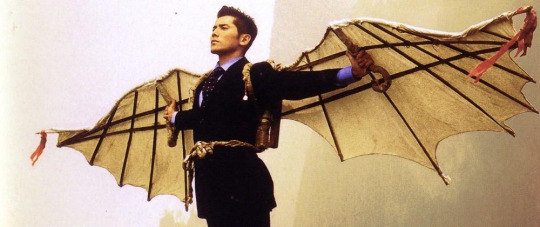
Miike da una explicación racional en el espíritu del materialismo escéptico: estamos hablando de los recuerdos de los eventos de la Segunda Guerra Mundial, cuando un piloto estadounidense cayó cerca de la aldea; los habitantes, habiendo visto el avión por primera vez, decidieron que se trataba de un hombre volador, especialmente porque el piloto caído sobrevivió y dejó descendientes entre los residentes locales, una niña de apariencia europea, que se considera, sin embargo, una perfecta mujer china. Poco a poco, los japoneses caen bajo el encanto directo de los residentes locales, se olvidan de sus objetivos pragmáticos para los que fueron enviados allí y comienzan a creer en los "chinos voladores". Los propios lugareños no renuncian a sus intentos de despegar de la tierra, una y otra vez portando alas artificiales y saltando desde las laderas de la montaña. En algún momento, los japoneses se unen a ellos: primero, el gerente Wada, y luego el más escéptico, pero en el fondo ingenuo y vivaz yakuza. La película culmina con escenas de saltos desesperados desde el acantilado por los propios japoneses y en las últimas tomas vemos una figura humana volando alto en el cielo con alas artificiales.
La ontología china es un ser flotante basado en la "magia del aliento" (M. Granet). En la película Miike se muestra literal y visualmente. En el contexto de este "ser flotante" (posguerra), Japón es visto como un reino de muerte y tierra, gravedad y decadencia. Tal topología comparativa encaja completamente en nuestra imagen noológica: el Logos chino, junto con el Budismo Tao y Mahayana, especialmente en la tradición Ch'an, se ha convertido en el componente más importante de la cultura japonesa a través de la "fascinación por China", que es el comienzo más importante de toda la historia japonesa (según L. Frobenius, la cultura / paideuma comienza con la "obsesión", "fascinación", Ergriffenheit). El surgimiento de la síntesis japonesa-china, correspondiente al diálogo activo y significativo del budismo y el confucianismo con el sintoísmo, las tradiciones locales y la dinastía imperial japonesa que dio lugar a la máxima encarnación del Logos japonés, donde en la estructura de la elipse japonesa el enfoque zen apoyó y fortaleció activamente el enfoque sintoísta, mientras que todo lo chino solo fundamentalizó e iluminó todo lo japonés. Esta se convirtió en la segunda fase de la Paideuma japonés (según L. Frobenius) - la fase de "expresión" (Ausdruck). La tercera fase fue la división de japoneses y chinos durante la era Meiji, y después del último intento de resurgimiento y la Revolución Conservadora durante el "Zen imperial" (la escuela de Kyoto, algunas formas de nacionalismo japonés en la primera mitad del siglo XX), la derrota en la Segunda Guerra Mundial, el colapso del Logos, del que solo quedaron momentos aplicados y técnicos (Anwendung).
Por lo tanto, el viaje de los japoneses a China en Miike se convierte en una ruta para regresar a su patria espiritual, a los orígenes de la fascinación. “El chino volador” para Japón es un indicio fundamental de la época en que existían los japoneses voladores, cuyo eco trágicamente doloroso e irónico, su doble / simulacro, es el héroe de Zebramen. Pero esta ideología, que es el código principal de Miike, contrasta demasiado con la realidad -tanto metafísica como social, política, cultural y estilísticamente, por lo que, aparentemente, el director no se atrevió a desarrollar este tema trágico y peligroso, plagado de una repetición del camino de Yukio Mishima- con el mismo final, predeciblemente triste e, incluso peor, simulado. La sombra de Mishima pesa sobre todos los verdaderos artistas japoneses e incluso los mejores de ellos no pueden ir más allá de los límites de este arquetipo (y los conformistas liberales no van a ir nunca hacia allá). Esto predetermina el posmodernismo amargo e irónico de Miike y otros directores cercanos a él, como Shinya Tsukamoto, autor de películas extremadamente absurdas sobre la fusión de un hombre con una máquina (desarrollo posmoderno del tema de Mishima - "cuerpo y acero") "Tetsuo – Hombre de acero" (1989) e incluso el hombre del poste eléctrico "Poste de Tokio" (1995) o Takashi Shimitsu, que dirigió "Marebito" (2004) y "La Maldición" (2002) con varias secuelas. Japón se está desplazando gradualmente hacia el espacio de otro mundo, donde la línea entre el mecanismo y el hombre, entre los vivos y los fantasmas, entre la razón y la cascada descendente a lo irracional se está difuminando.
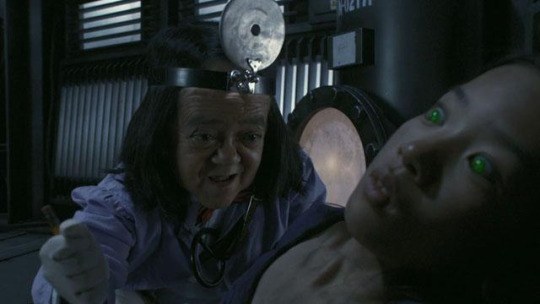
Bodegas sintoístas
Todas estas pinturas describen los pisos inferiores del cosmos sintoísta, donde la saturación de lo sagrado todavía se hace sentir claramente (y esta es la diferencia fundamental con el posmodernismo estadounidense o europeo, del cual lo sagrado fue expulsado en los albores del euromodernismo), pero toda coherencia, facilidad, orden, compulsión y espiritualidad se pierden irremediablemente. Este es un doble negro del Japón, de su pueblo y civilización, sumergido en la Tierra de las Raíces, Yomi, hasta el fondo del Universo Sintoísta en la etapa de su último y final enfriamiento. El surrealismo posmoderno japonés no es, por tanto, más que un realismo "fotográfico" fiable, una réplica exacta del estado del Logos japonés, que se encuentra en la última etapa de su decadencia y hundimiento.
7 notes
·
View notes